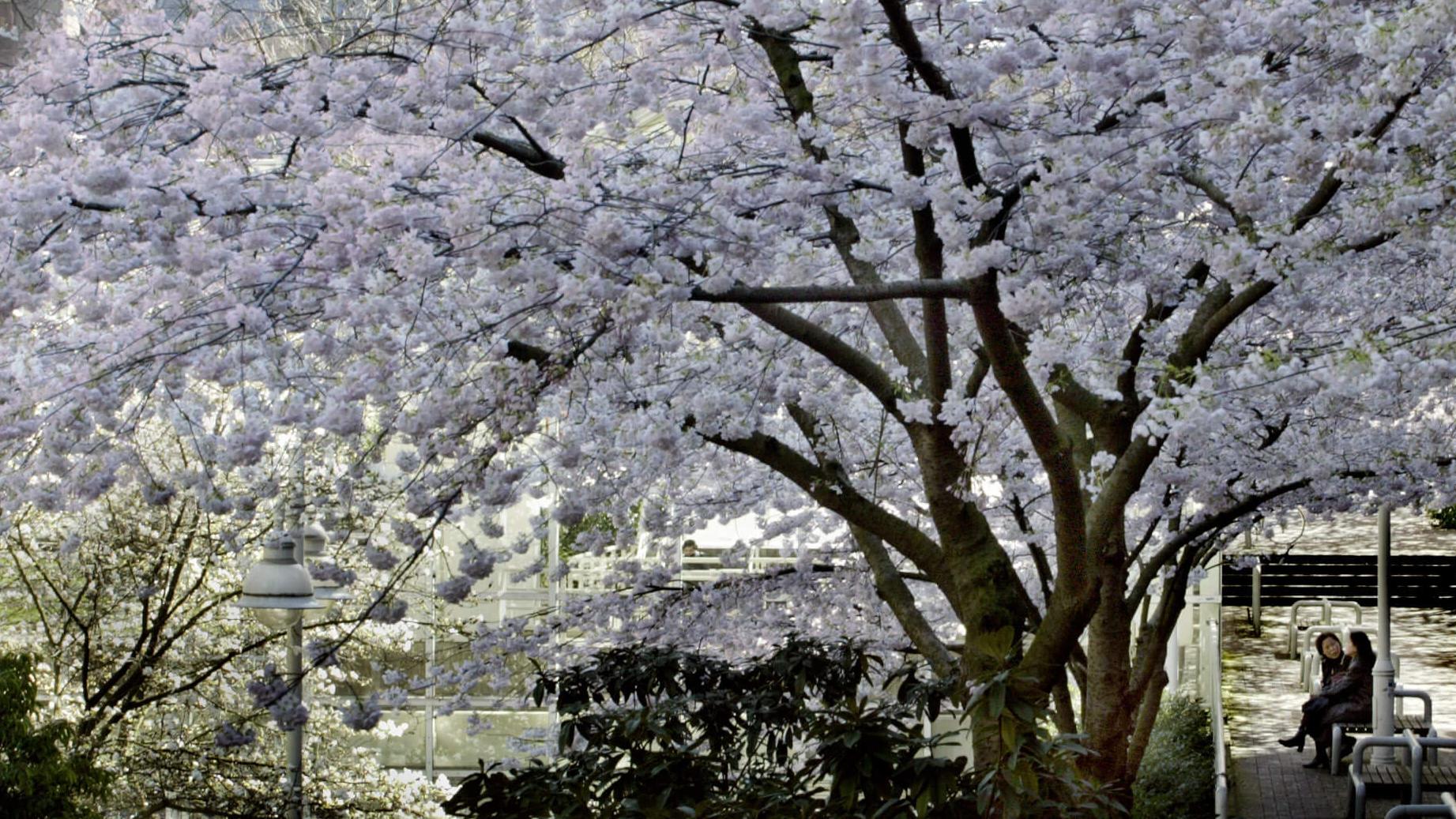Canada closes most of its great outdoors to curb COVID-19
Cherry blossoms were in full bloom during a spring day on Canada’s west coast, Vancouver, Canada, March 26, 2003.
A walk inside Toronto’s sprawling High Park — the biggest green space in the city — is the best part of Adrian Salaberry’s day. It includes a zoo, an oak forest and groves of Japanese cherry trees.
During the lockdown, Salaberry and his 20-year-old son, Fecundo Salaberry, have been going there to escape their apartment a few blocks away.
They say it’s the only activity they do all day. They always look for a quiet spot where there is no one else around so they can run and exercise.
“Quarantine is crazy,” Fecundo Salaberry said. “You have to go outside. You can’t stay so long inside.”
“We need that,” Adrian Salaberry said. “It’s healthy, you know.”
Related: Human touch is essential. How are people coping with ‘skin hunger
But they won’t be able to visit for at least a couple of weeks. Last Thursday, city health officials closed the park for cherry blossom season, which is just starting in Toronto. That means the Salaberrys will have to get their exercise on city streets.
“It’s not the same,” Adrian said. “You have a lot of beautiful trees here and nature. Fresh air. It’s not the same. It’s totally different.”
High Park is the latest outdoor space to close since Canada declared a state of emergency and asked people to stay home because of the coronavirus pandemic. Much of the Canadian great outdoors is off-limits to the public — including hiking trails, campgrounds and national parks.
“We know that maintaining physical distancing is simply not possible with the size of crowds that come through the park every year to see the blossoms.”
Toronto mayor John Tory said he had no choice but to close High Park while the cherry trees are blooming. They’ve become a major draw for tourists, attracting massive crowds of visitors every year.
“We know that maintaining physical distancing is simply not possible with the size of crowds that come through the park every year to see the blossoms,” he said.
Related: World leaders pledge $8 billion to fight the coronavirus
But the weather is warming up now, and Canadians are starting to feel the effects of six weeks stuck mostly at home. A recent poll showed that half of Canadians reported that their mental health has suffered during the pandemic.
Officials are struggling to come up with policies that allow for physical activity while maintaining a physical distance.
British Columbia’s top physician Dr. Bonnie Henry told people on Canada’s west coast that the risk of catching coronavirus outdoors is infinitesimally small.
“Please go outside. Go outside with your family,” she told journalists in Vancouver last Wednesday.
Ontario’s chief health officer Dr. David Williams was more circumspect.
“In general, ‘outdoors’ means — it depends what you’re doing and what setting you’re in,” he told a media briefing in Toronto.
“The wind, the sunlight, the rain, the general weather conditions, the temperature and the humidity, those can all have a pretty big impact on how long the virus can persist in the environment.”
Part of the problem is a lack of research. Angela Rasmussen, a virologist at Columbia University, said there’s very little conclusive data about how the virus behaves outdoors. She said it’s likely affected by a host of different conditions.
“The wind, the sunlight, the rain, the general weather conditions, the temperature and the humidity, those can all have a pretty big impact on how long the virus can persist in the environment,” she said.
Researchers do know that the virus spreads through respiratory droplets produced when someone coughs, talks or just breathes. Being in close proximity to someone who is infected increases the risk of transmission because you’re exposed to more of their respiratory droplets.
Related: Coronavirus tears through Canada nursing homes
Rasmussen said that’s also true outdoors. But there’s no solid evidence that an infectious dose of the coronavirus can travel any further than approximately six feet. Even if it could, Rasmussen said the risk of transmission is “quite low.”
“You would still have to be standing in a position where you would be exposed to enough of those respiratory droplets landing on your nasal mucosa or being inhaled that you would actually get a dose sufficient to start an infection,” she said.
Rasmussen said there’s no proof that has ever happened. She said parks and outdoor spaces should be safe, as long as everyone follows the rules for physical distancing.
Toronto city officials are standing their ground. Anyone caught entering High Park during this cherry blossom season could be fined about $500.
For those who can’t go without seeing the blossoms during high season, there’s a webcam live-streaming the spectacle.
